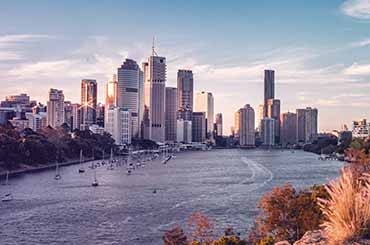- Market services
-
Compliance audits & reviews
Our audit team undertakes the complete range of audits required of Australian accounting laws to help you to help you meet obligations or fulfil best practice procedures.
-
Audit quality
We are fiercely dedicated to quality, use proven and globally tested audit methodologies, and invest in technology and innovation.
-
Financial reporting advisory
Our financial reporting advisory team helps you understand changes in accounting standards, develop strategies and communicate with your stakeholders.
-
Audit advisory
Grant Thornton’s audit advisory team works alongside our clients, providing a full range of reviews and audits required of your business.
-
Digital assurance
We capture actionable, quality insights from data within your financial reporting and auditing processes.

-
Corporate tax & advisory
We provide comprehensive corporate tax and advisory service across the full spectrum of the corporate tax process.
-
Private business tax & advisory
We work with private businesses and their leaders on all their business tax and advisory needs.
-
Tax compliance
We work alongside clients to manage all tax compliance needs and identify potential compliance or tax risk issues.
-
Employment tax
We help clients understand and address their employment tax obligations to ensure compliance and optimal tax positioning for their business and employees.
-
International tax
We understand what it means to manage tax issues across multiple jurisdictions, and create effective strategies to address complex challenges.
-
GST, stamp duty & indirect tax
Our deep technical knowledge and practical experience means we can help you manage and minimise the impact of GST and indirect tax, like stamp duty.
-
Tax law
Our team – which includes tax lawyers – helps you understand and implement regulatory requirements for your business.
-
Innovation Incentives
Our national team has extensive experience navigating all aspects of the government grants and research and development tax incentives.
-
Transfer pricing
Transfer pricing is one of the most challenging tax issues. We help clients with all their transfer pricing requirements.
-
Tax digital consulting
We analyse high-volume and unstructured data from multiple sources from our clients to give them actionable insights for complex business problems.
-
Corporate simplification
We provide corporate simplification and managed wind-down advice to help streamline and further improve your business.
-
Superannuation and SMSF
Increasingly, Australians are seeing the benefits, advantages and flexibility of taking control of their own superannuation and retirement planning.

-
Payroll consulting & Award compliance
Many organisations are grappling with a myriad of employee agreements and obligations, resulting in a wide variety of payments to their people.
-
Cyber resilience
The spectrum of cyber risks and threats is now so significant that simply addressing cybersecurity on its own isn’t enough.
-
Internal audit
We provide independent oversight and review of your organisation's control environments to manage key risks, inform good decision-making and improve performance.
-
Financial crime
Our team helps clients navigate and meet their obligations to mitigate crime as well as develop and implement their risk management strategies.
-
Consumer Data Right
Consumer Data Right (CDR) aims to provide Australians with more control over how their data is used and disclosed.
-
Risk management
We enable our clients to achieve their strategic objectives, fulfil their purpose and live their values supported by effective and appropriate risk management.
-
Controls assurance
In Australia, as with other developed economies, regulatory and market expectations regarding corporate transparency continue to increase.
-
Governance
Through fit for purpose governance we enable our clients to make the appropriate decisions on a timely basis.
-
Regulatory compliance
We enable our clients to navigate and meet their regulatory and compliance obligations.

-
Forensic accounting and dispute advisory
Our team advises at all stages of a litigation dispute, taking an independent view while gathering and reviewing evidence and contributing to expert reports.
-
Investigations
Our licensed forensic investigators with domestic and international experience deliver high quality results in the jurisdictions in which you operate.
-
Asset tracing investigations
Our team of specialist forensic accountants and investigators have extensive experience in tracing assets and the flow of funds.

-
Mergers and acquisitions
Our mergers and acquisitions specialists guide you through the whole process to get the deal done and lay the groundwork for long-term success.
-
Acquisition search & strategy
We help clients identify, finance, perform due diligence and execute acquisitions to maximise the growth opportunities of your business.
-
Selling a business
Our M&A team works with clients to achieve a full or partial sale of their business, to ensure achievement of strategic ambitions and optimal outcomes for stakeholders.
-
Operational deal services
Our operational deal services team helps to ensure the greatest possible outcome and value is gained through post merger integration or post acquisition integration.
-
Transaction advisory
Our transaction advisory services support our clients to make informed investment decisions through robust financial due diligence.
-
ESG and sustainability due diligence
As environmental, social, and governance (ESG) considerations become increasingly pivotal for dealmakers in Australia, it is important for investors to feel confident in assessing transactions through an ESG lens.
-
Business valuations
We use our expertise and unique and in-depth methodology to undertake business valuations to help clients meet strategic goals.
-
Tax in mergers & acquisition
We provide expert advice for all M&A taxation aspects to ensure you meet all obligations and are optimally positioned.

-
Corporate finance
We provide effective and strategic corporate finance services across all stages of investments and transactions so clients can better manage costs and maximise returns.
-
Debt advisory
We work closely with clients and lenders to provide holistic debt advisory services so you can raise or manage existing debt to meet your strategic goals.
-
Working capital optimisation
Our proven methodology identifies opportunities to improve your processes and optimise working capital, and we work with to implement changes and monitor their effectiveness.
-
Capital markets
Our team has significant experience in capital markets and helps across every phase of the IPO process.
-
Debt and project finance raising
Backed by our experience accessing full range of available funding types, we work with clients to develop and implement capital raising strategies.
-
Private equity
We provide advice in accessing private equity capital.
-
Financial modelling
Our financial modelling advisory team provides strategic, economic, financial and valuation advice for project types and sizes.
-
Payments advisory
We provide merchants-focused payments advice on all aspects of payment processes and technologies.

-
Voluntary administration & DOCA
We help businesses considering or in voluntary administration to achieve best possible outcomes.
-
Corporate insolvency & liquidation
We help clients facing corporate insolvency to undertake the liquidation process to achieve a fair and orderly company wind up.
-
Complex and international insolvency
As corporate finance specialists, Grant Thornton can help you with raising equity, listings, corporate structuring and compliance.
-
Safe Harbour advisory
Our Safe Harbour Advisory helps directors address requirements for Safe Harbour protection and business turnaround.
-
Bankruptcy and personal insolvency
We help clients make informed choices around bankruptcy and personal insolvency to ensure the best personal and stakeholder outcome.
-
Creditor advisory services
Our credit advisory services team works provides clients with credit management assistance and credit advice to recapture otherwise lost value.
-
Small business restructuring process
We provide expert advice and guidance for businesses that may need to enter or are currently in small business restructuring process.
-
Asset tracing investigations
Our team of specialist forensic accountants and investigators have extensive experience in tracing assets and the flow of funds.

-
Independent business reviews
Does your company need a health check? Grant Thornton’s expert team can help you get to the heart of your issues to drive sustainable growth.
-
Commercial performance
We help clients improve commercial performance, profitability and address challenges after internal or external triggers require a major business model shift.
-
Safe Harbour advisory
Our Safe Harbour advisory helps directors address requirements for Safe Harbour protection and business turnaround.
-
Corporate simplification
We provide corporate simplification and managed wind-down advice to help streamline and further improve your business.
-
Director advisory services
We provide strategic director advisory services in times of business distress to help directors navigate issues and protect their company and themselves from liability.
-
Debt advisory
We work closely with clients and lenders to provide holistic debt advisory services so you can raise or manage existing debt to meet your strategic goals.

-
Business planning & strategy
Our clients can access business planning and strategy advice through our value add business strategy sessions.
-
Private business company secretarial services
We provide company secretarial services and expert advice for private businesses on all company secretarial matters.
-
Outsourced accounting services
We act as a third-party partner to international businesses looking to invest in Australia on your day-to-day finance and accounting needs.
-
Superannuation and SMSF
We provide SMSF advisory services across all aspects of superannuation and associated tax laws to help you protect and grow your wealth.
-
Management reporting
We help you build comprehensive management reporting so that you have key insights as your business grows and changes.
-
Financial reporting
We help with all financial reporting needs, including set up, scaling up, spotting issues and improving efficiency.
-
Forecasting & budgeting
We help you build and maintain a business forecasting and budgeting model for ongoing insights about your business.
-
ATO audit support
Our team of experts provide ATO audit support across the whole process to ensure ATO requirements are met.
-
Family business consulting
Our family business consulting team works with family businesses on running their businesses for continued future success.
-
Private business taxation and structuring
We help private business leaders efficiently structure their organisation for optimal operation and tax compliance.
-
Outsourced CFO services
Our outsourced CFO services provide a full suite of CFO, tax and finance services and advice to help clients manage risk, optimise operations and grow.
-
ESG, sustainability and climate reporting
There is a growing demand for organisations to provide transparency on their commitment to sustainability and disclosure of the nonfinancial impacts of their business activities. Commonly, the responsibility for sustainability and ESG reporting is landing with CFOs and finance teams, requiring a reassessment of a range of reporting processes and controls.
-
ESG, sustainability and climate advisory
With the ESG and sustainability landscape continuing to evolve, we are focussed on helping your business to understand what ESG and sustainability represents and the opportunities and challenges it can provide.
-
ESG, sustainability and climate reporting assurance
As the demand for organisations to prepare information in relation to ESG & sustainability continues to increase, through changes in regulatory requirements or stakeholder expectations, there is a growing need for assurance over the information prepared.
-
ESG and sustainability due diligence
As environmental, social, and governance (ESG) considerations become increasingly pivotal for dealmakers in Australia, it is important for investors to feel confident in assessing transactions through an ESG lens.

-
Management consulting
Our management consulting services team helps you to plan and implement the right strategy to deliver sustainable growth.
-
Financial consulting
We provide financial consulting services to keep your business running so you focus on your clients and reaching strategic goals.

-
China practice
The investment opportunities between Australia and China are well established yet, in recent years, have also diversified.
-
Japan practice
The trading partnership between Japan and Australia is long-standing and increasingly important to both countries’ economies.
-
India practice
It’s an exciting time for Indian and Australian businesses looking to each jurisdiction as part of their growth ambitions.
-
Singapore practice
Our Singapore Practice works alongside Singaporean companies to achieve growth through investment and market expansion into Australia.
-
Vietnam practice
Investment and business opportunities in Vietnam are expanding rapidly, driven by new markets, diverse industries, and Vietnam's growing role in export manufacturing, foreign investment, and strong domestic demand.

-
 Client Alert Unlock 2025: government grants updateIf government grants are part of your 2025 strategy, take note of the available quarter one funding opportunities. With increasing inflationary pressures, government grants can be an essential alternative funding source for businesses with critical investment projects.
Client Alert Unlock 2025: government grants updateIf government grants are part of your 2025 strategy, take note of the available quarter one funding opportunities. With increasing inflationary pressures, government grants can be an essential alternative funding source for businesses with critical investment projects. -
 Report Agribusiness, Food & Beverage Dealtracker 2024Merger & Acquisition (M&A) and equity market activity in the Agribusiness, Food & Beverage (Ag, F&B) sector is undergoing a strategic shift, as investors have become more selective and increasingly cautious in response to global economic uncertainty.
Report Agribusiness, Food & Beverage Dealtracker 2024Merger & Acquisition (M&A) and equity market activity in the Agribusiness, Food & Beverage (Ag, F&B) sector is undergoing a strategic shift, as investors have become more selective and increasingly cautious in response to global economic uncertainty. -
 Client Alert Government Grants in FY25As we embark on a new financial year, it’s crucial to take a strategic approach to understanding the government grants landscape.
Client Alert Government Grants in FY25As we embark on a new financial year, it’s crucial to take a strategic approach to understanding the government grants landscape. -
 Client Alert Consultation on foreign resident CGT rules commencesTreasury is taking steps to ensure fairer tax treatment for foreign resident investors by tightening Australia's foreign resident Capital Gains Tax (CGT) regime. Proposed changes aim to broaden the CGT base and enhance integrity, impacting infrastructure, energy, agriculture, and more.
Client Alert Consultation on foreign resident CGT rules commencesTreasury is taking steps to ensure fairer tax treatment for foreign resident investors by tightening Australia's foreign resident Capital Gains Tax (CGT) regime. Proposed changes aim to broaden the CGT base and enhance integrity, impacting infrastructure, energy, agriculture, and more.
-
Renewable Energy
Transformation through energy transition

-
Flexibility & benefits
The compelling client experience we’re passionate about creating at Grant Thornton can only be achieved through our people. We’ll encourage you to influence how, when and where you work, and take control of your time.
-
Your career development
At Grant Thornton, we strive to create a culture of continuous learning and growth. Throughout every stage of your career, you’ll to be encouraged and supported to seize opportunities and reach your full potential.
-
Diversity & inclusion
To be able to reach your remarkable, we understand that you need to feel connected and respected as your authentic self – so we listen and strive for deeper understanding of what belonging means.
-
In the community
We’re passionate about making a difference in our communities. Through our sustainability and community engagement initiatives, we aim to contribute to society by creating lasting benefits that empower others to thrive.
-
Graduate opportunities
As a new graduate, we aim to provide you more than just your ‘traditional’ graduate program; instead we kick start your career as an Associate and support you to turn theory into practice.
-
Vacation program
Our vacation experience program will give you the opportunity to begin your career well before you finish your degree.
-
The application process
Applying is simple! Find out more about each stage of the recruitment process here.
-
FAQs
Got questions about applying? Explore frequently asked questions about our early careers programs.
-
Our services lines
Learn about our services at Grant Thornton
-
Current opportunities
Current opportunities
-
Remarkable people
Our team members share their remarkable career journeys and experiences of working at Grant Thornton.
-
Working at Grant Thornton
Explore our culture, benefits and ways we support you in your career.
-
Current opportunities
Positions available.
-
Contact us
Get in touch
COVID-19 has brought with it a tumultuous yet interesting time for the manufacturing sector.
April was largely a disaster, but JobKeeper helped businesses stay afloat. May brought with it supply chain issues, but June and July saw sales off the richter with a renewed sense of optimism in the market place. With the AFR reporting last week that Australia ranks a solid last in manufacturing self-sufficiency according to the OECD – there is clearly opportunity to grow.
Mark Phillips, manufacturing expert at Grant Thornton discusses how the manufacturing sector is responding to the ebbs and flows of demand, the supply chain and difficulties with freight and logistics, and the procurement power that the government holds.
Available on Apple Podcasts, Spotify or within your browser
Podcast Transcript
Jonty Davies-Conyngham
Welcome to Grant Thornton’s Navigating the New Normal podcast series. My name is Jonty Davies-Conyngham, and I’m here talking to Mark Phillips, National Head of Performance Improvement and manufacturing industry specialist at Grant Thornton. In our last podcast in April, we talked about supply chain issues, and how this was impacting the manufacturing sector. However, a lot has changed since then, and there seems to not only be a light at the end of the tunnel, but a beacon, for the manufacturing sector. Thanks so much for joining us again, Mark. I think first up, really, we have to touch on what has changed for the sector in the past couple of months, as there seems to have been a remarkable change in fortunes for many Australian manufacturers.
Mark Phillips
Yeah, look, it’s been an interesting last few months. As we know, COVID has created absolute turmoil in the marketplace, and I’ve been talking to quite a few of the manufacturers, about 20 to 30 of them; I actually sit on a couple of committees, and we get to share some ideas. There’s a common theme that’s coming through. The first common theme for many is that April was pretty much a disaster. Sales were down, there was a real concern about the future. Luckily we had JobKeeper come into the marketplace at that time. The May supply chains were difficult; it was difficult to access supply. But June/July has seen… As one manufacturer put it to me, he said, “Sales are off the Richter scale.” There’s a renewed form of energy in the marketplace. There’s a different type of enquiry that’s coming through. They’re getting their traditional enquiries, but they’re also finding that people are finding multiple ways to get to them, and it’s been sales on sales. So it’s actually been quite interesting. What we thought were going to be the problems going into COVID-19 haven’t been the main issues; and in fact, the main issues that have come through is that freight is causing a lot of grief, and in particular, air freight. At the moment, you thought air freight might take you five days; it’s now taking up to five weeks, with air freight. So air freight is causing massive issues. The other thing with freight is because we’ve lost a lot of the domestic flights, and the international flights, we’ve lost the flexibility of locations, and we’ve lost the flexibility of timing.
Resourcing has been a big issue; and when I say resourcing, accessing people in the logistics area has proven to be quite a challenge. I listened to a group of manufacturers trying to swap forklift operators, because they had a problem with accessing enough logistics style people. Cybersecurity has been a major issue. The major issue with cybersecurity is because we’ve now got most of the manufacturing people working onsite, but most of the administrative people working offsite, to minimise people in the workplace, it means that you’ve got the use of systems and processes that weren’t designed to cope with this, and IP has been at risk. A couple of manufacturers noted that they’d had breaches. The style of information that seems to be of quite a lot of interest is costing data, customer data, supply chain data, and of course any IP that you’ve got. So there’s been some real issues around that.
The flip side though, wow, what a united group of people at the moment. I was particularly pleased listening to one meeting, hearing Mark Pedder from Pedders, manufacturers shock absorbers, saying to a group of 10 manufacturers that with the impending face mask requirements, actually saying to the manufacturers, “If you don’t have enough face masks, let me know; I’ve got some, I can loan them to you.” This is when we were just about to step into face masks in the Victorian marketplace. So it’s been a really interesting period.
Jonty Davies-Conyngham
And yet the AFR reported last week that Australia ranks a solid last in manufacturing self-sufficiency, according to the OECD.
Mark Phillips
Yeah. Look, this is not new. I mean, we’ve been slipping, and slipping, and slipping for a long time; and actually, when you look at us, we’re actually below a lot of the developing nations, let alone the OECD. So our ranking has been quite poor. There’s two ways of looking at this, though. If we go back to February of this year, the fact that we ranked so poorly wouldn’t have even made the press. One of the things I really like, and as I said last time we met, I talked about how COVID-19 has brought about transparency to manufacturing. It’s brought about transparency in understanding who manufactures what in Australia, which wasn’t happening before; and this is just another brilliant opportunity for further transparency in the marketplace. So you could look at this and go, “The glass is half empty”, because we don’t have the level of manufacturing that we really require for self-sufficiency; but you can also look at this as the glass half full. It shows that we have a huge amount of growth opportunities sitting in the marketplace, just for us to get to what is deemed a more acceptable position on self-sufficiency. So, yeah, as I said, pre-COVID-19 this wouldn’t have made the press. Post COVID-19, this is making the press, and I’m really pleased, on behalf of manufacturers.
Jonty Davies-Conyngham
So there’s a sense of optimism, with local manufacturers experiencing an uptick. I have to ask; what will this mean for those that were accessing JobKeeper?
Mark Phillips
Yeah, look, JobKeeper is an interesting program. Very pleased the federal government went down the pathway of JobKeeper. If you were a bona fide manufacturing business that had a decline in your quarter, to which you lodged your returns to request JobKeeper, and then you’ve subsequently had an increase in sales and revenue, well, you know what; use those funds that you’ve got available to you to invest, because you can. If you were a little bit liberal with your language, JobKeeper is a program that is a self-assessment program, so if you’ve overclaimed it, you need to talk to your relevant accountants to actually make sure that you actually make adjustments. It’s going to be a program that, come the end of September, will be harder to qualify if you are actually in a better position; and I’d like to think that if we’re lucky, most manufacturers will not seek JobKeeper post September. That said, I’ll wait to see what happens with the Victorian stage four lockdown. It will be interesting to see if there’s any flow-on effects from that.
Jonty Davies-Conyngham
So that’s not exactly a bad problem to have. Now, you’ve said business is on the up, but with border closures and other restrictions on the way, how are we getting products to customers?
Mark Phillips
As I mentioned earlier, logistics is probably the biggest issue. Air freight has certainly blown out to all proportions, and that’s creating some issues on both the delivery to customers, and also creating some issues on supply of product into your organisation. So there’s clearly a need to look at that. Domestically, there’s just a lot more planning that’s got to go into logistics these days. The other issue that’s causing some new learnings in respect of logistics is because the mix of customers is changing, as I said, some of our manufacturers are getting all sorts of enquiries, and they are enquiries from B2B, but there are also consumers coming directly to businesses. Better understanding logistics in delivering outside the B2B market is a bit of a challenge, and it would be good to see that we get some further improvement in skillsets in those areas. One of the things that we do have to bear in mind with one of the things that could be as a result of JobKeeper though is that as I said, we can’t at the moment access sufficient logistics people. I’m not sure at the moment if enough people are looking for alternatives, given that they’ve got an employer at the moment. Post-September, hopefully there’s a little bit more availability of labour to further support the logistics side of things.
Jonty Davies-Conyngham
The government has made it clear that jobs are their number one priority - what support does the manufacturing industry need from the government to revitalise?
Mark Phillips
The government is the largest procurer in the Australian marketplace, and we need government to consciously procure locally. We need government to put down their mindset of pricing and some of their commentary around open and free market, and look to what can the Australian marketplace provide for government. Now, government has done a good job in seeking local manufacturing support for things like hand sanitiser, face masks, medical equipment; but you know what, government buys a lot of other product, and we need them to start to consider to procure that locally with price being the secondary factor. The first primary consideration needs to be what impact does the local purchase have on the economy. So I’m going to keep reinforcing that it’s really important that government is the most powerful procurement business in the Australian marketplace; we need government to procure locally on everything that it procures.
Jonty Davies-Conyngham
We are approximately three months out from the federal budget. What are you specifically hoping to see from the budget to support the sector?
Mark Phillips
Reflecting on where the market is at, at the moment, and what role government can play, the main thing that government can do – I mean, it’s done great work in its support around JobKeeper – but we really need government to go back to some of the core issues in the marketplace. Streamline red tape. Understand the burden that compliance has on the manufacturing sector, and in fact, has on all sectors. Understand that we’ve also now got another level of compliance, with our need to mitigate risk in respect of COVID. We do all the right things to ensure that we procure responsibly, that we do the right thing by our workforce, we do the right thing by our community, we document everything we need to document. There are manufacturing countries that don’t actually do as much as we do. So I think government streamlining its focus on understanding what the impact of requests are, and ensuring that they can reduce the compliance burden where they can; and then we need government to spend, but spend in the right places. Spend on infrastructure, spend on those projects which are actually going to create opportunity for the supply of product. Spend on infrastructure, but demand that you procure locally. Where you can’t procure locally, accept it, but procure locally. When it comes to manufacturing specifically, support the investment in new equipment, if they can. We need to stay ahead of the curve, and effectively ensure that we are as efficient as we can be. Because if we’ve got the right equipment, we can compete, and we can compete on a global platform, not just on a national platform. And of course, the question always is, “What comes first?” Is it the job that comes first, and then the materials and equipment to support it, and the sales, or is it the sales, the material, the equipment, and the jobs? As I said, I think government setting about doing some of the big spends on infrastructure would be very beneficial to manufacturing. Government putting teeth to its procurement processes to ensure that they genuinely seek to buy locally. Government supporting manufacturers with leading edge equipment, whether that be more efficient, more effective, more reliable, whatever the circumstances may be; and then jobs will come after that. So that’s what we would really like to see from the federal government.
Jonty Davies-Conyngham
Mark, thank you for your time. You can find further information on how COVID-19 might affect your business, and assistance available to you, on the Grant Thornton COVID-19 hub at www.grantthornton.com.au/covid19/. If you liked this podcast and would like to hear more, you can find and subscribe to Grant Thornton Australia on iTunes, Spotify, or SoundCloud.



























